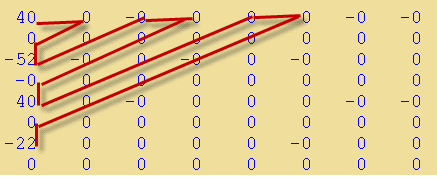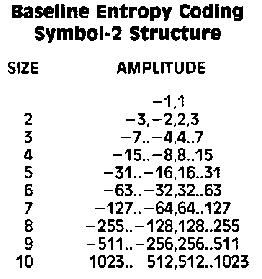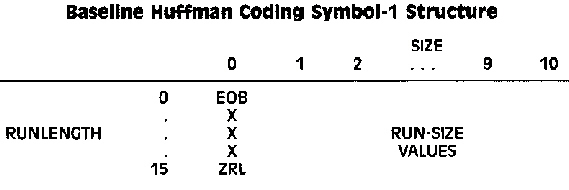 |
 |
Description:
| NTSC | PAL | HDTV | hw3p1HTV | |
| BW | 4.20 | 5.00 | 20.00 | 80.00 |
| NL | 525.00 | 625.00 | 1125.00 | 2250.00 |
| CH | 0.85 | 0.80 | 0.83 | 0.83 |
| AR | 1.33 | 1.33 | 1.78 | 1.78 |
| FR | 29.97 | 25.00 | 30.00 | 30.00 |
| RH | 340.34 | 384.00 | 553.33 | 1106.67 |
| Cv | 0.92 | 0.92 | 0.96 | 0.96 |
| NL | 525 | 625 | 1125 | 2250 |
| Kf | 0.7 | 0.7 | 0.7 | 0.7 |
| Rv | 338.1 | 402.5 | 756 | 1512 |
| Np | 153425.4 | 206080 | 743680 | 2974720 |
hw3p2 =
0 0 0 0 0 0 0 0
0 0 0 0 0 0 0 0
0 0 0 0 0 0 0 0
20 20 20 20 20 20 20 20
20 20 20 20 20 20 20 20
0 0 0 0 0 0 0 0
0 0 0 0 0 0 0 0
0 0 0 0 0 0 0 0
hw3p2=zeros(8,8); hw3p2([4 5],:)=20*ones(2,8)
>> hw3p2=zeros(8,8); hw3p2([4 5],:)=20*ones(2,8)
hw3p2 =
0 0 0 0 0 0 0 0
0 0 0 0 0 0 0 0
0 0 0 0 0 0 0 0
20 20 20 20 20 20 20 20
20 20 20 20 20 20 20 20
0 0 0 0 0 0 0 0
0 0 0 0 0 0 0 0
0 0 0 0 0 0 0 0
>> getdctf(hw3p2)
ans =
40.0000 0.0000 -0.0000 0.0000 0.0000 0.0000 -0.0000 -0.0000
0.0000 0.0000 0.0000 0.0000 0.0000 0.0000 0.0000 0.0000
-52.2625 -0.0000 0.0000 -0.0000 0.0000 -0.0000 0.0000 0.0000
-0.0000 0.0000 0.0000 0.0000 0.0000 0.0000 0.0000 0.0000
40.0000 0.0000 -0.0000 0.0000 0.0000 0.0000 -0.0000 -0.0000
0.0000 0.0000 0.0000 0.0000 0.0000 0.0000 0.0000 0.0000
-21.6478 0.0000 0.0000 0.0000 0.0000 -0.0000 0.0000 0.0000
0.0000 0.0000 0.0000 0.0000 0.0000 0.0000 0.0000 0.0000
ans =
40 0 -0 0 0 0 -0 -0
0 0 0 0 0 0 0 0
-52 -0 0 -0 0 -0 0 0
-0 0 0 0 0 0 0 0
40 0 -0 0 0 0 -0 -0
0 0 0 0 0 0 0 0
-22 0 0 0 0 -0 0 0
0 0 0 0 0 0 0 0



Pattern: (6, 40), (2, 6, 11), (6, 6, 40), (10, 5, 9), (0, 0)
# of bits: 4+ 6+ 4+ 4+ 6+ 4+ 4+ 6+ 4+ 4+ 5+ 4+ 4 = 59 bits.